
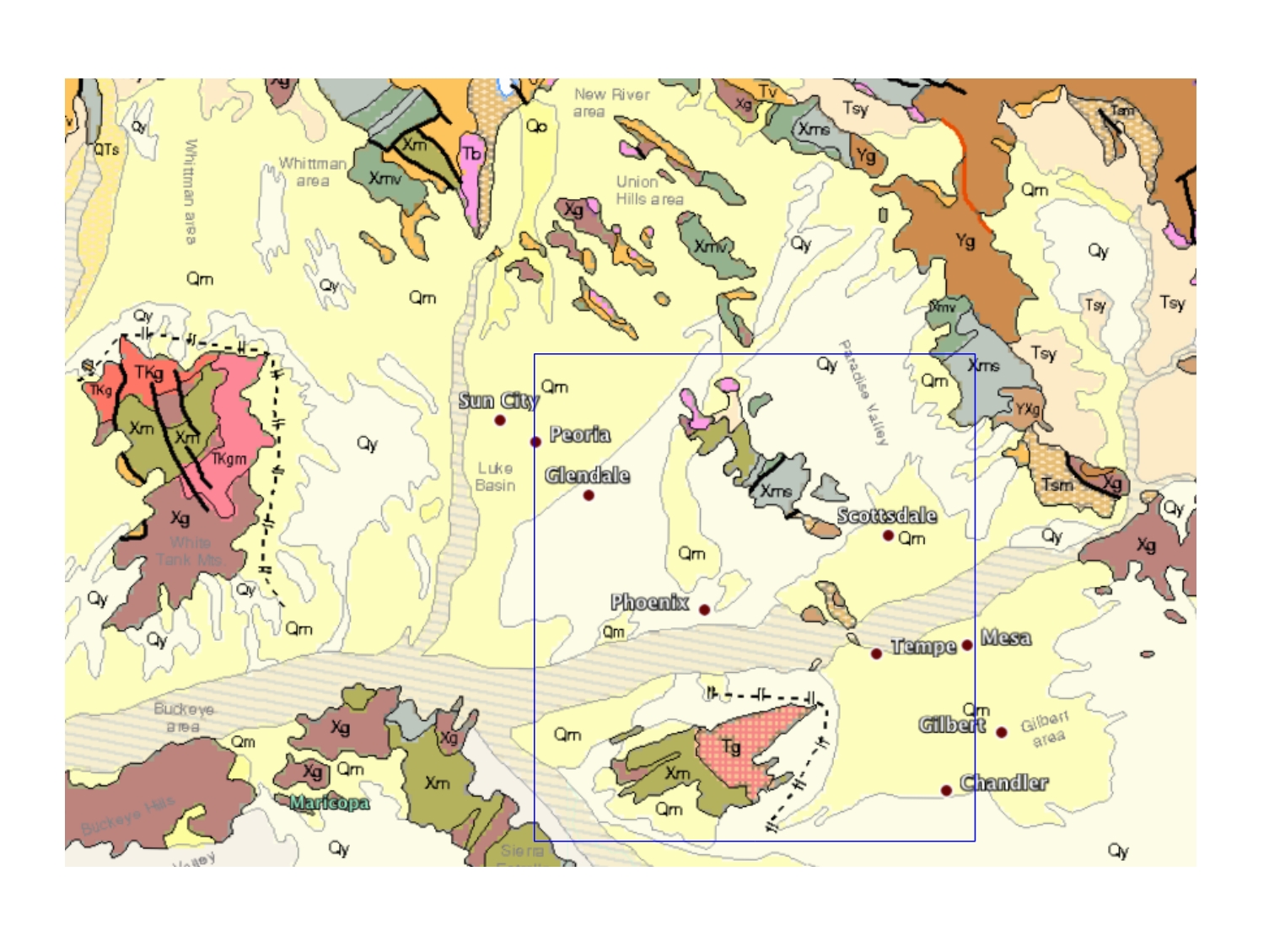 |
For this discussion of the geology of the Phoenix area, we'll focus on the region in the blue rectangle above. This area includes the Phoenix Mountain Preserve (Squaw Peak/Piestewa Peak), Camelback Mountain, the Tempe Buttes, and South Mountain, as shown in the figure below. The geology of the mountain ranges that surround Phoenix (White Tank Mountains, Sierra Estrella Mountains, McDowell Mountains) is generally similar to that of the ranges that we'll discuss here, but further to the north (Bradshaw Mountains) and east (Superstition Mountains) the story becomes different.
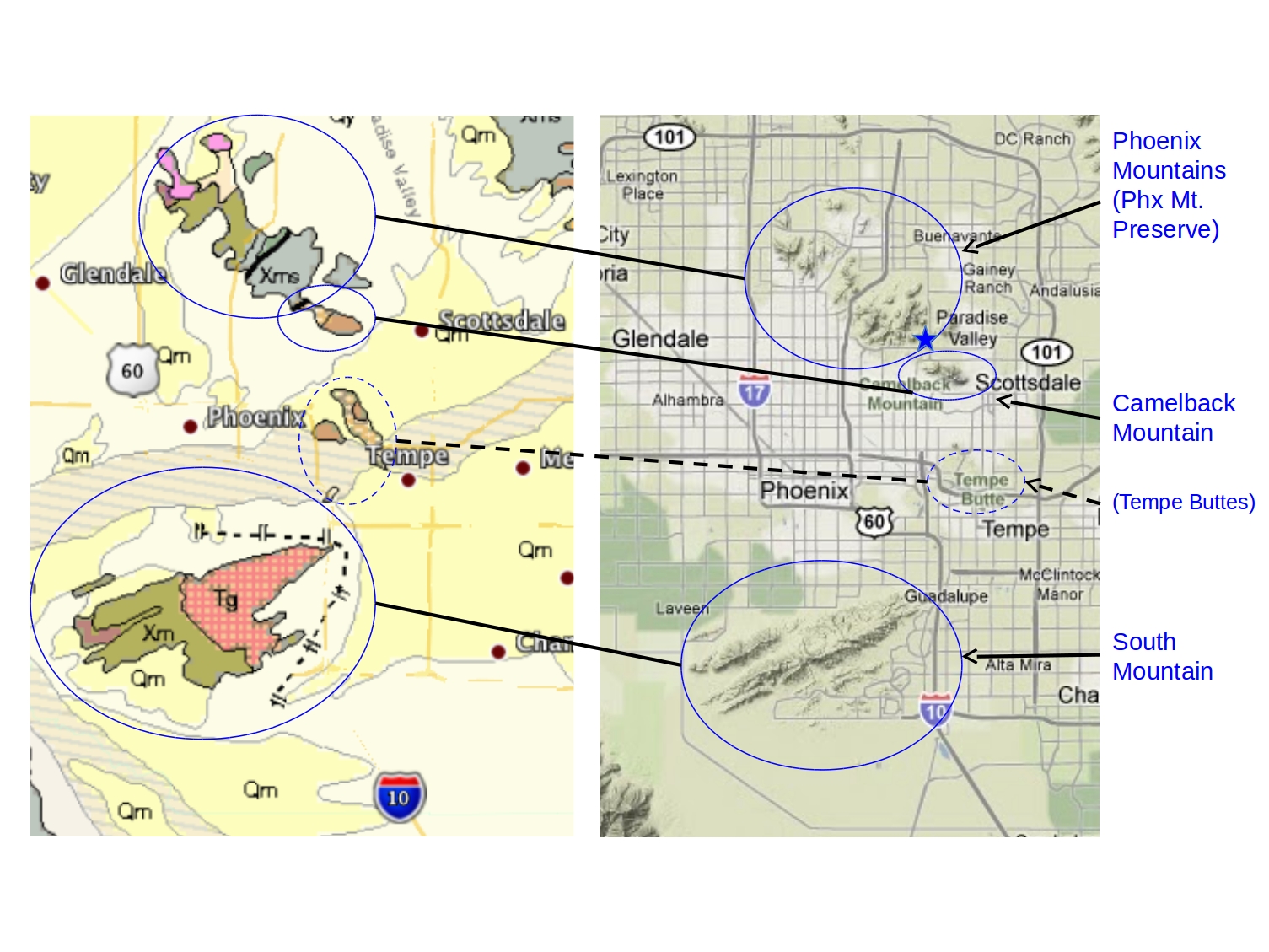 |
As you can see in the figure above, the Phoenix Mountains (including Camelback Mountain), the Tempe Buttes, and South Mountain form small bedrock islands within a vast sea of alluvial sediments. These mountains comprise classic Basin & Range topography: roughly linear mountain ranges separated by deep alluvial basins.
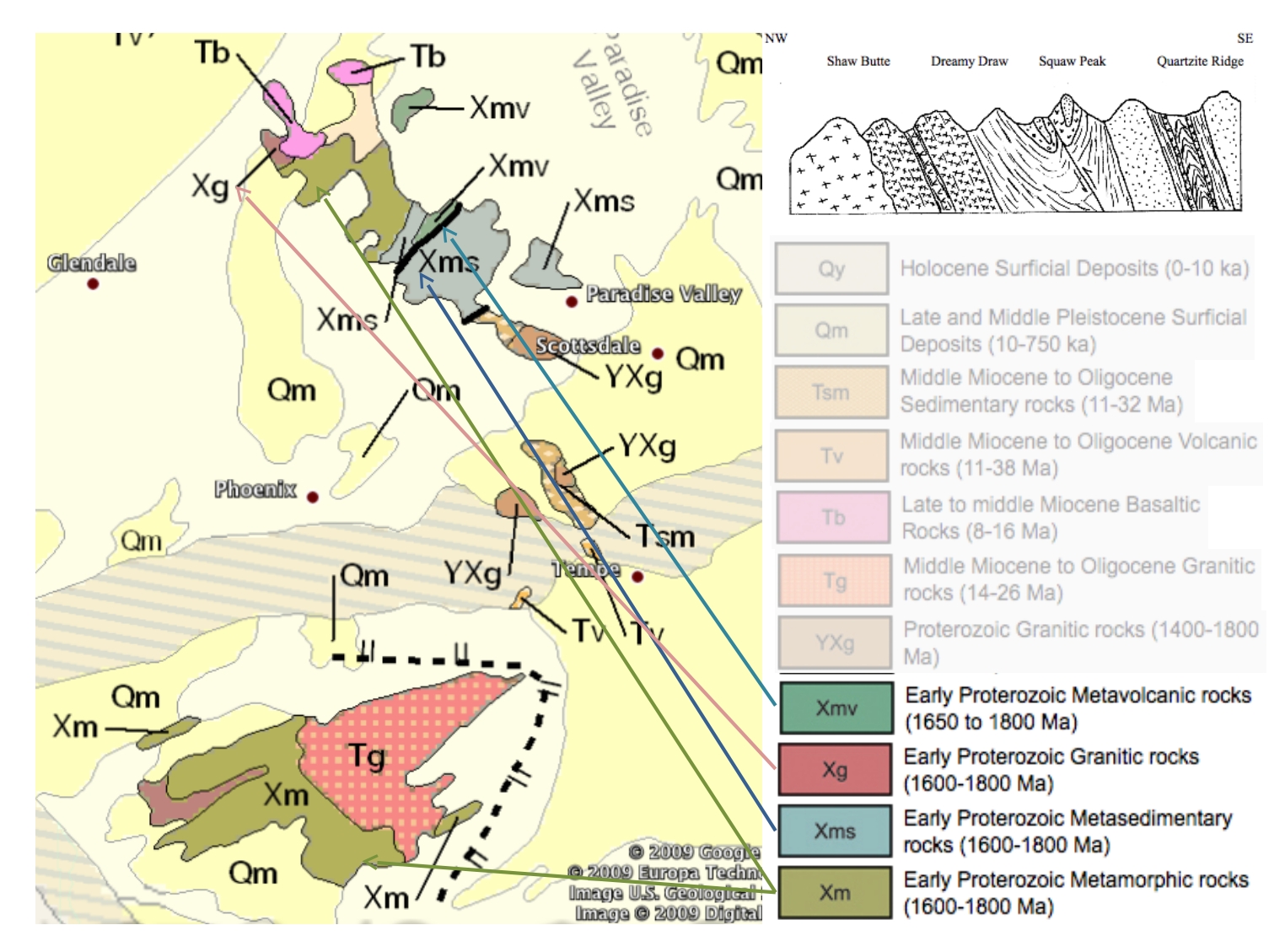 |
The geologic history of the Phoenix area begins with a sequence of metamorphic rocks that formed between 1.8 and 1.6 billion years ago. These rocks were originally part of an oceanic volcanic arc much like the modern Sunda Arc (which the Indonesian islands of Sumatra and Java comprise). (Of course, neither land plants nor land animals had evolved by 1.8 billion years ago, so the islands would have been barren, rocky wastelands.) Between 1.8 and 1.6 billion years ago, several such volcanic arcs collided with and were added onto the North American continent. (Geologists use the name Laurentia for the ancient core of North America.) The Paleoproterozoic (1.8 to 1.6 billion years old) crystalline rocks around Phoenix were involved in those accretionary events; it was during these tectonic collisions that they were metamorphosed into their present form. These rocks are most clearly exposed in the Squaw Peak (Piestewa Peak) and Dreamy Draw areas.
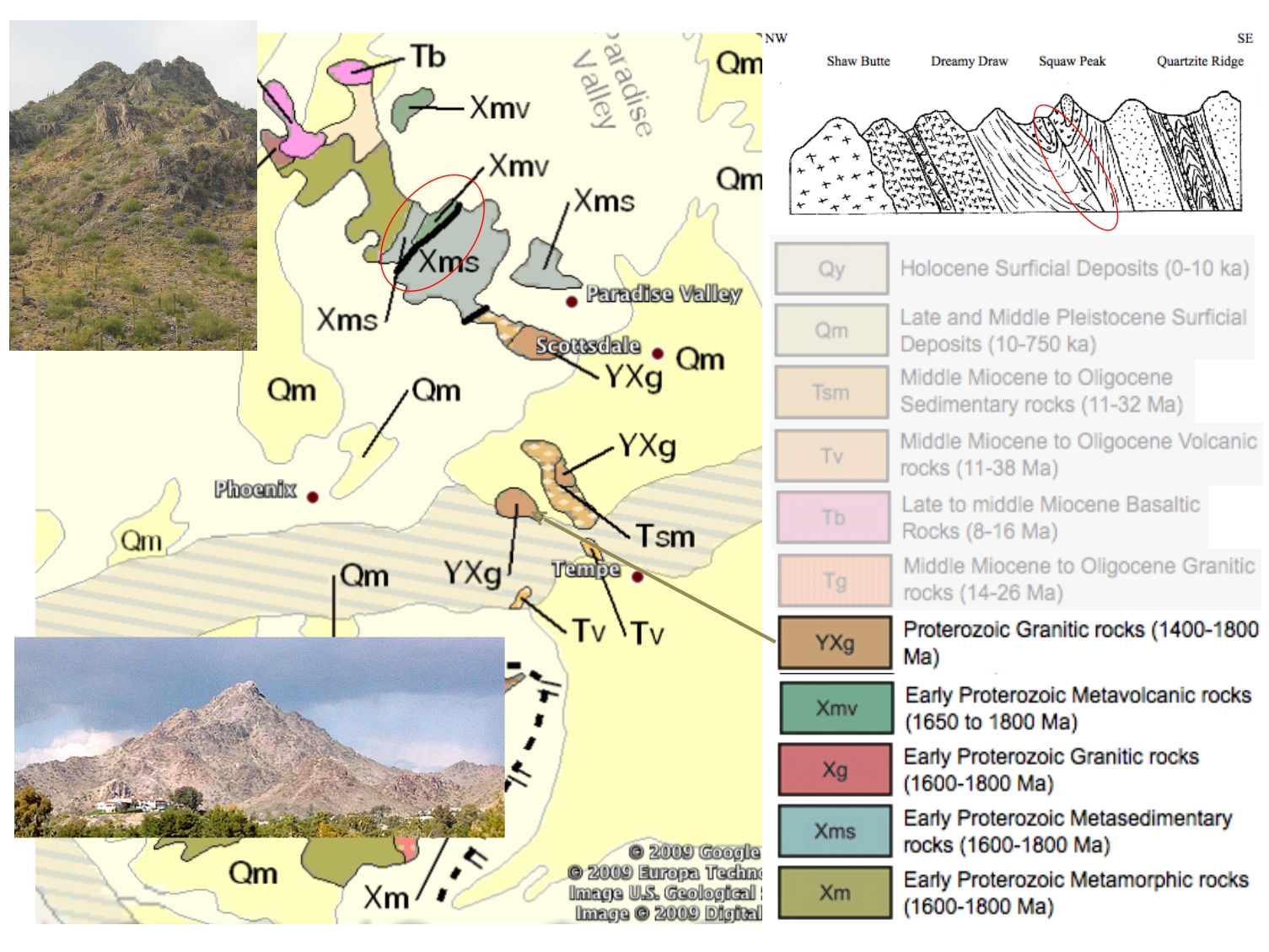 |
Slightly younger granitic rocks also formed during these ancient tectonic events. The east side of Camelback Mountain is composed of granitic rocks that are of this age.
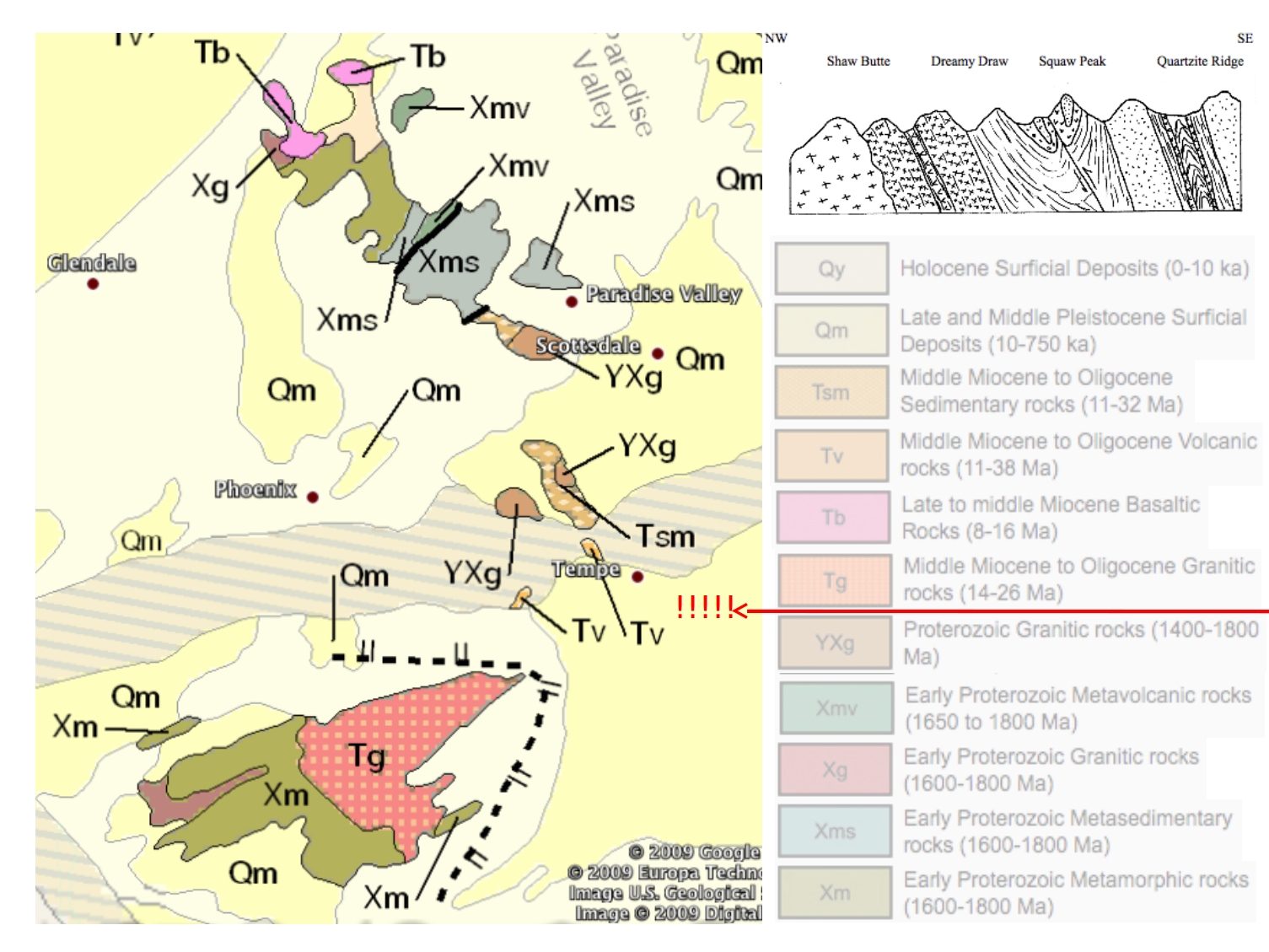 |
After the formation of these granitic rocks, there is no geologic record of what happened in the Phoenix area for over a billion years. (Of course, we know generally what was happening in this area from rocks that are exposed elsewhere in the state.) We therefore say that there is an unconformity that separates the ancient Proterozoic rocks from much younger volcanic and sedimentary rocks. Unconformities represent missing time in the geologic record.
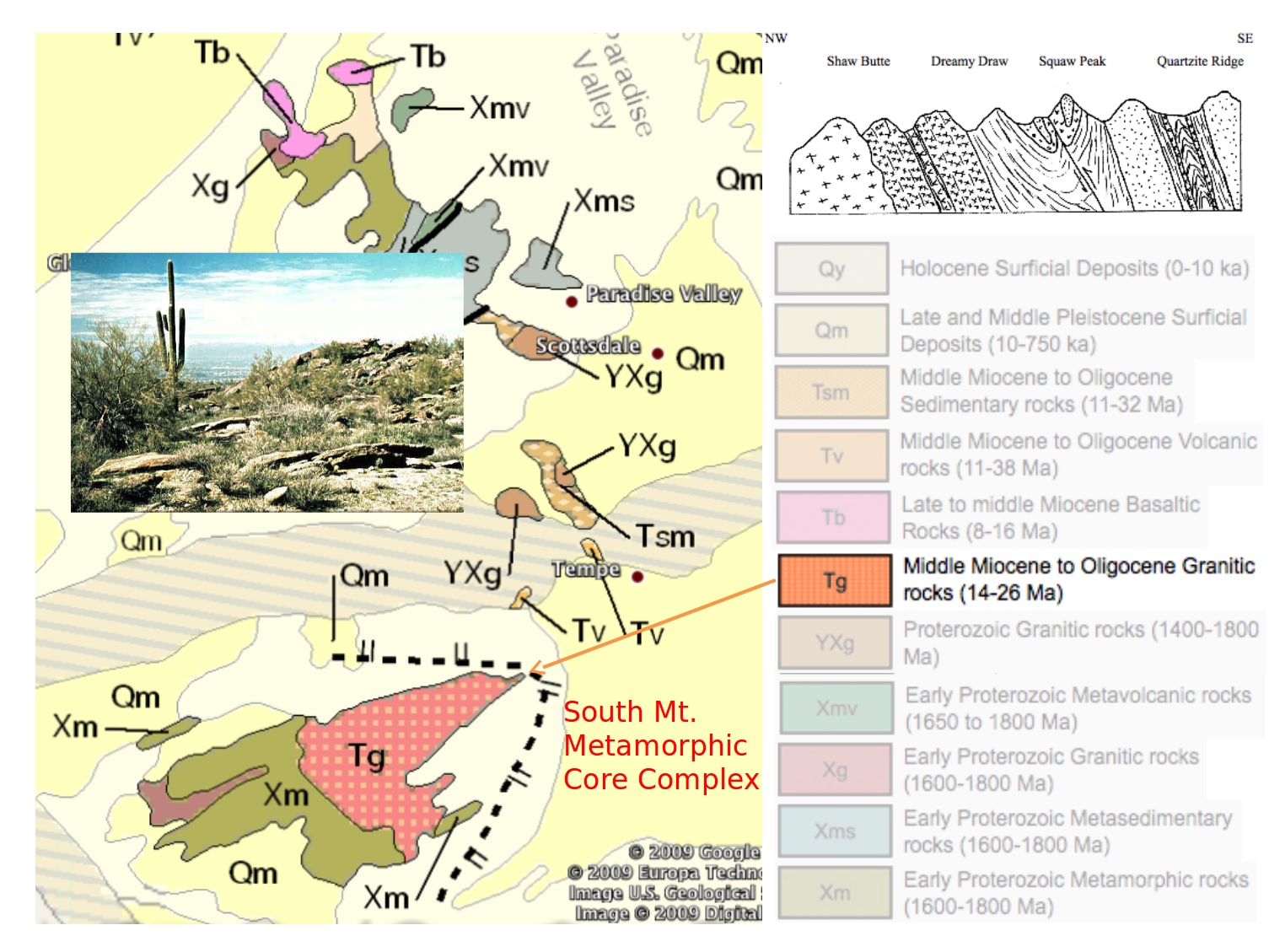 |
The geologic record in the Phoenix area then resumes in the late Tertiary (roughly 20 million years ago) with emplacement of a granitic rock body in the South Mountain area.
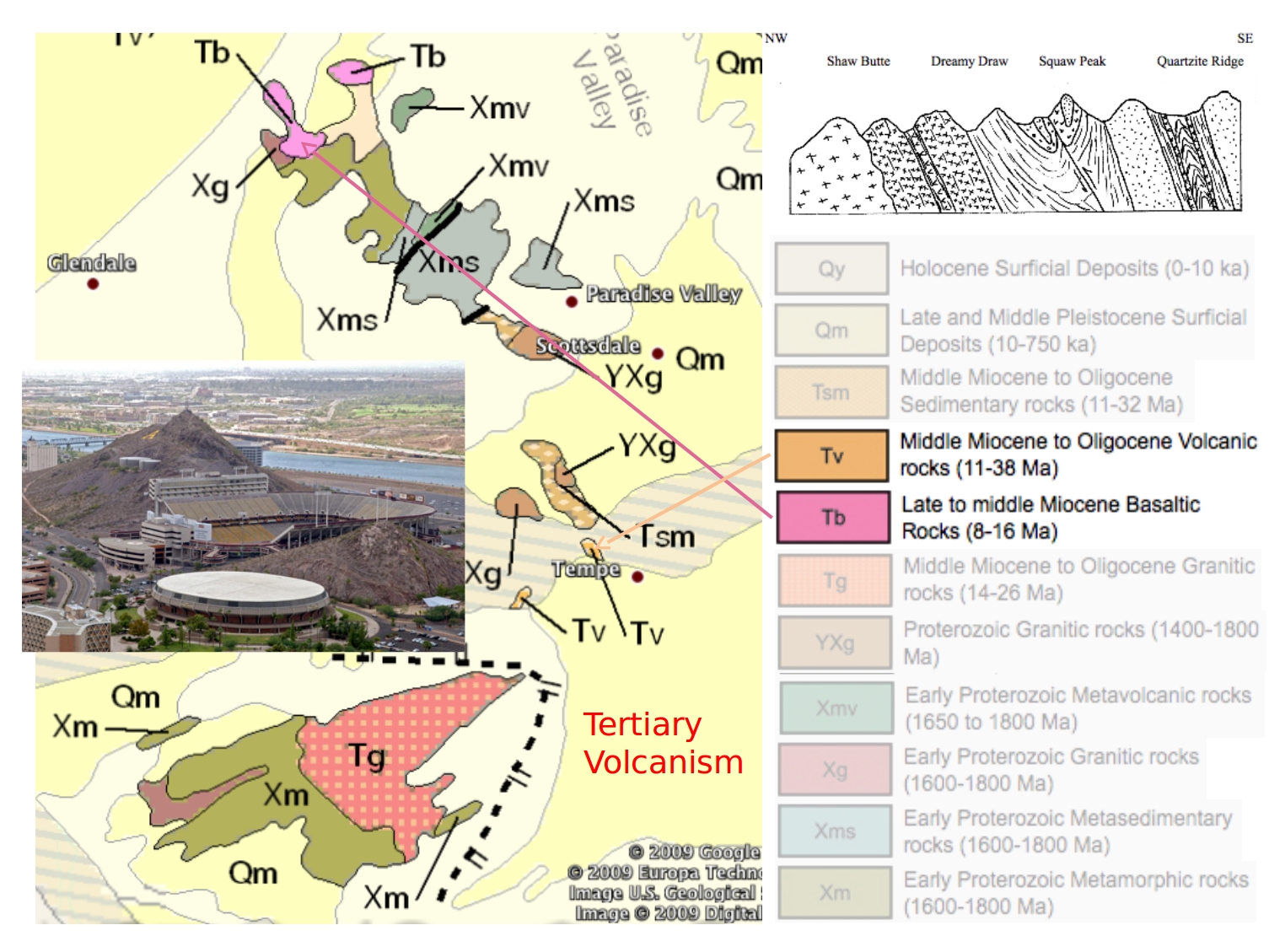 |
This granite is associated temporally with eruption of volcanic rocks in the Phoenix area, as well. The volcanic rocks of Shaw Butte in the Phoenix Mountain Preserve and "A" Mountain at ASU were formed during this time. All of this activity was likely associated with the very beginning of Basin & Range Extension, when the crust of the American Southwest began to be ripped apart due to the development of the San Andreas fault system at about 15 million years ago.
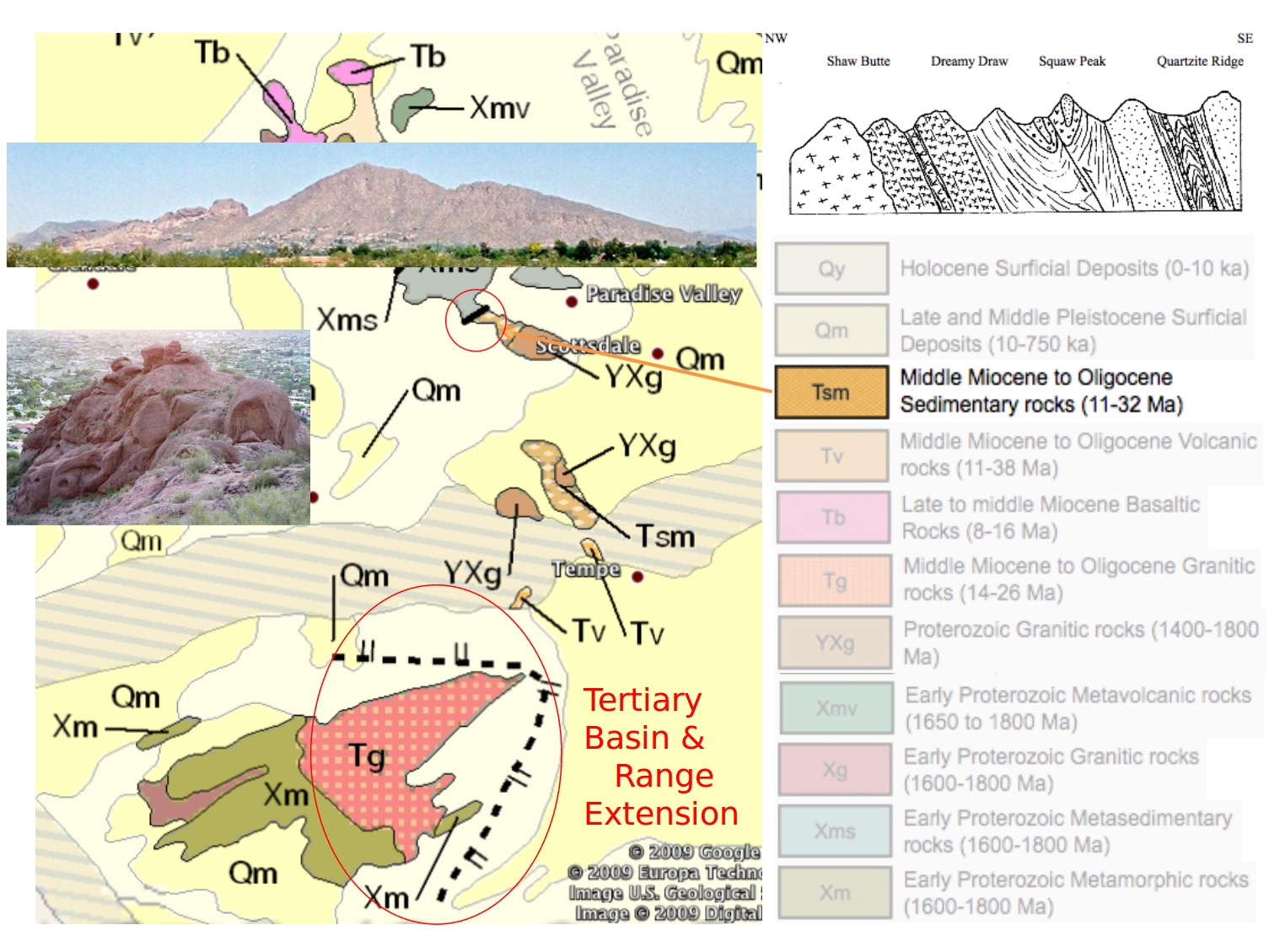 |
As Basin & Range extension pulled the crust in this area apart, the mountain ranges that we see today began to take their modern shape. These new mountains formed so quickly that their slopes were very unstable and prone to landsliding. Massive landslide deposits are preserved on the west side of Camelback Mountain and in the Tempe Buttes.
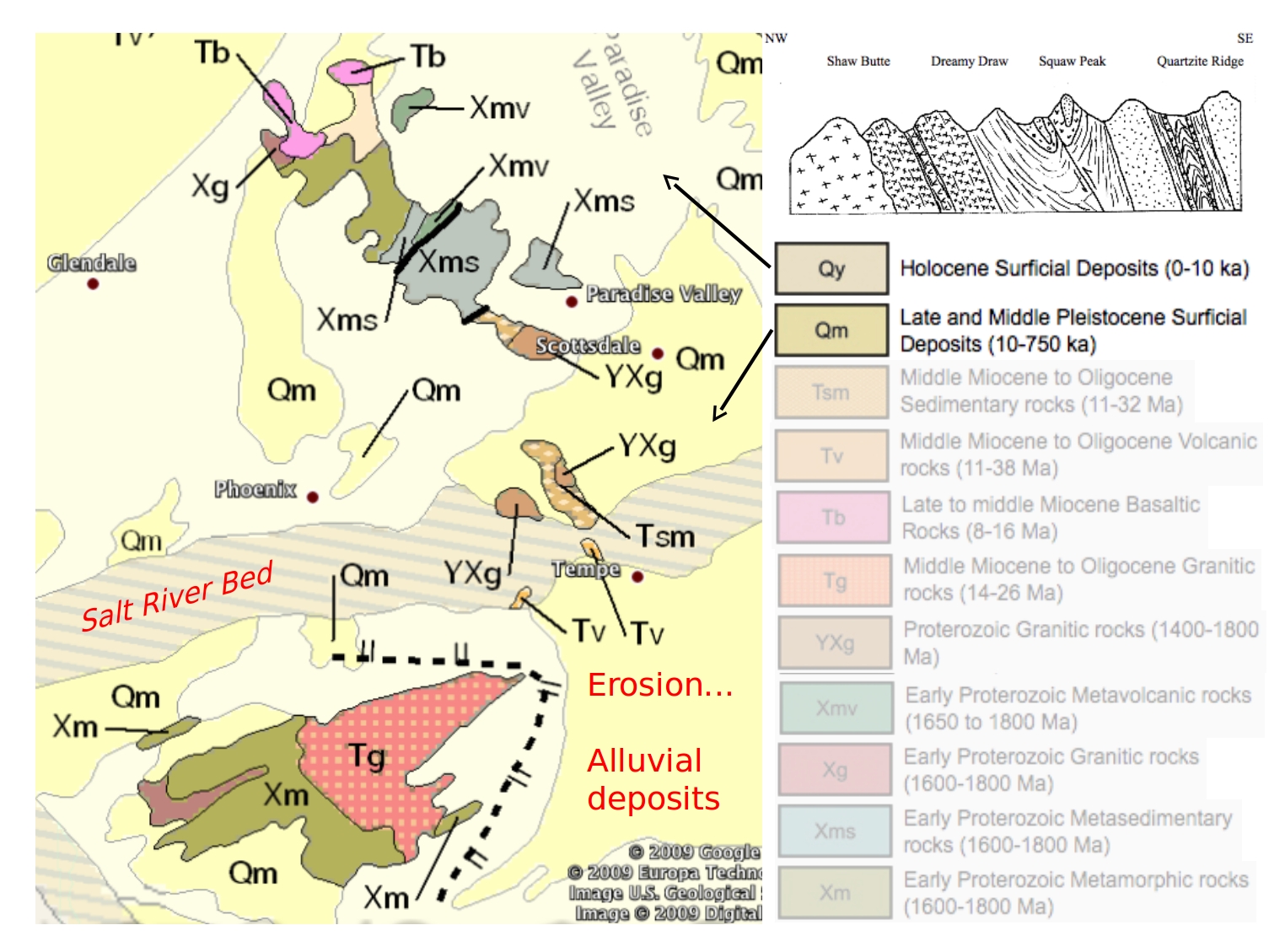 |
Over time, Basin & Range extension slowed down in this part of the Southwestern US. (The majority of Basin & Range extension now occurs in Nevada and Utah.) The mountains began to be eroded down to their current sizes and shapes, and the sediment that was eroded off of them filled up alluvial basins in between the ranges. Erosion of course continues today.
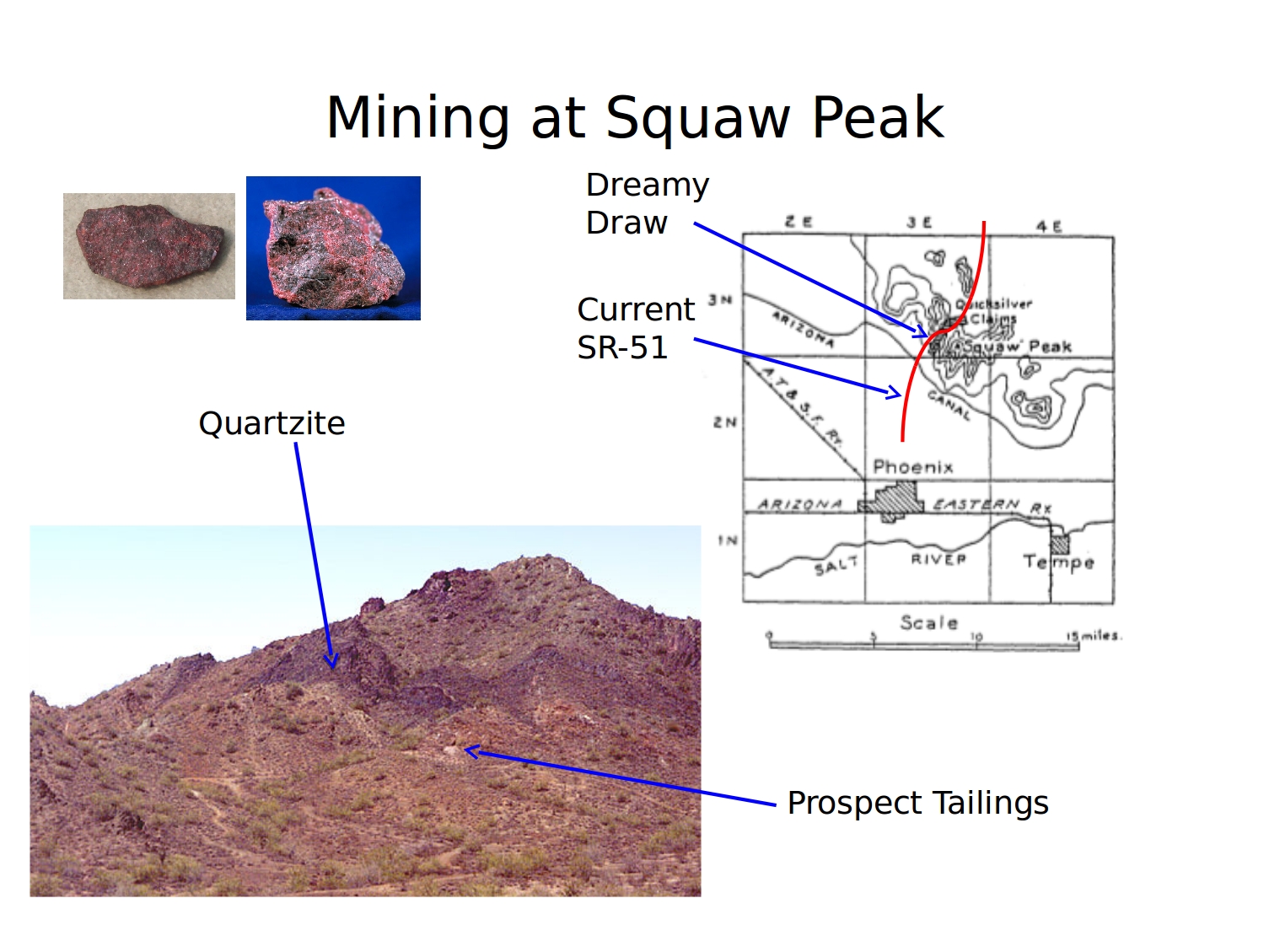 |
It's interesting to note that the Phoenix Mountains do host a tiny bit of economic mineralization. Cinnabar (a mercury ore) was mined in the Dreamy Draw area in the early 1900s. In fact, Dreamy Draw's name is an allusion to the neurological side effects that the mercury miners would experience after spending time working with the toxic ores. Some prospect pits can still be seen in the area. You can read more about the mercury mining here.
Back to Rocking with the Rocks
Page modified on 7/18/2016